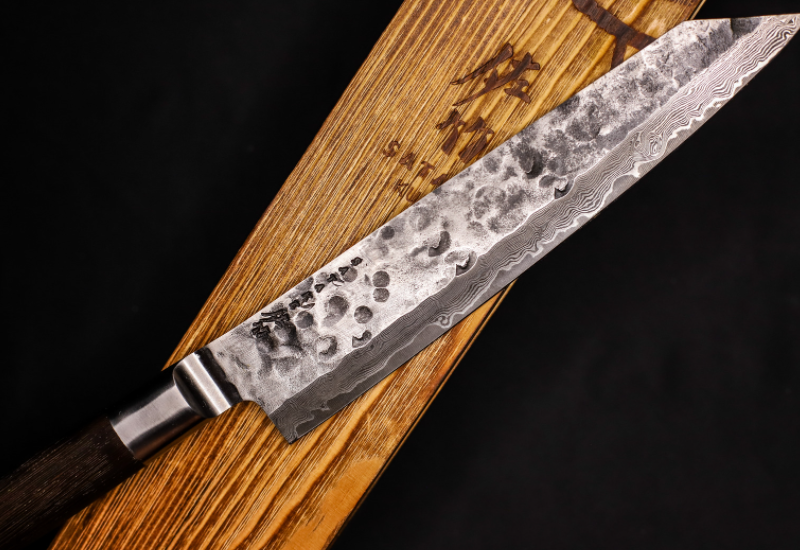Kitchen knives are one of the most common and widely used kitchen utensils. While simplistic in its design, kitchen knives are extremely versatile and today’s article, we’ll share a few interesting facts about knives that may surprise you.
1
A single knife is all a chef requires for cooking. While there are dozens of types of knives available, the chef’s knife is a universal, multi-purpose knife which is extremely versatile and is used in almost every kitchen. The chef’s knife’s versatility lies within its size, which ranges between 8 to 10 inches long and 1.5 to 2 inches wide. Some countries may also add their own minor variations to their version of the chef’s knife. For instance, the German chef’s knife is curved along the entire length of the blade, while the French version has a straight blade that is only rounded at the tip. The Japanese version of the chef’s knife, known as the Gyuto, is similar to the French version but much sharper.
2
Most chef’s knives are made of steel, which is an alloy consisting of iron and carbon. The carbon in a knife represents only a small percentage of the alloy compound, however the more carbon in the mixture, the softer the blade.
52
This number is an identifier indicating the typical hardness of a chef’s knife. Hardness is an extremely important measurement when it comes to knives as there is no scale of sharpness. Sharpness can be sharpened to a greater or lesser degree; therefore hardness is an important parameter to bear in mind when considering which knife to buy. The common and most widespread measurement system for knife hardness is the Rockwell rating. In the case of knives, the ‘C’ scale is used and is expressed in units of HRC (High Carbon Steel). Without going too much detail in the technical terms, an HRC value in the 52-58 range indicates a softer blade, while a rating in the range of 59 to 60 represents a blade of medium hardness.
Blades with elevated hardness will be above HRC 60. Generally speaking, higher HRC rated knives will cut more effectively but are more brittle and fragile, which is why higher HRC rated knives are usually only found as short-bladed knives or kitchen knives designed for precision cuts. It doesn’t take much to snap or chip these types of knives therefore you need to be very careful. A medium hardness blade is preferred for the versatile chef’s knife, while softer blades on the other hand are ideal for meat cleavers or axes.
1084
This number represents a code which indicates the composition of a blade. It’s generally stamped on the blade itself or indicated on the packaging. Here, 1084 indicates a carbon percentage of 0.84%, and along with 1095 (0.95% carbon), are the most commonly used values when it comes to knives. Keep in mind, the values are more indicative than precise. 1074 may officially mean the blade has a nominal carbon percentage of 0.74%, but the actual percentage may vary between 0.70% to 0.80%. These types of alloys help create blades that are easy to use and versatile for cooks of all skill levels.
52100
This is a type of high carbon chromium alloy steel with a carbon percentage ranging between 0.98% to 1.10%. It’s further enhanced by a high percentage of chrome (between 1.30 % and 1.60%), and a touch of manganese (between 0.24% an 0.45%) which makes this knife very soft. Due to its unique composition, the knives made with 52100 steel may appear somewhat rough, however it is this rugged look which drives knife connoisseurs into a frenzy as these types of blades are only made by highly skilled craftsmen. Knives made with 52100 steel come with a heavy price tag and can exceed $500 dollars.

